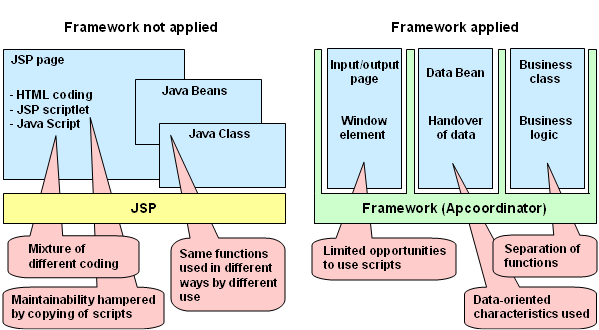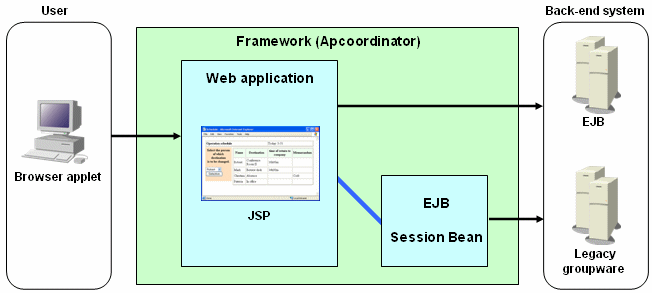When you create a business application, you must first determine a framework for the application, and then create the application by building on the framework. This framework is called an application framework, or more simply, a framework.
When a framework is used for application development, application elements such as logic and screens are created in the defined form and then inserted into the framework. This process creates the application. The framework definition limits the degree of freedom, but the framework of the application takes shape, enabling you to create easy-to-maintain and easy-to-reuse applications.
Interstage Studio framework
The creation of applications in accordance with the Interstage Studio framework (Apcoordinator) has the following advantages:
Standardize application structures, thus eliminating programming differences among developers.
Independently create logical parts, screens, and other application constituents and improve maintainability.
Easily separate applications into component parts and improve reusability.
Hide communication-handling elements and other secondary elements by using frameworks and enable their automatic operation.
Figure 2.2 Applying the framework to Web applications

Applications supported by the framework
The Interstage Studio framework supports the development of the following types of applications:
Web applications
Apcoordinator provides frameworks for Web applications with JSP (JavaServer Pages) or Servlets.
Apcoordinator enables separation and structured configuration of screens and their logical parts.
Apcoordinator provides functions for communication with applets.
EJB
Apcoordinator provides frameworks thereby increasing compatibility between EJB and Web front-applications.

For more information about the Interstage Studio framework and information about how to create an application using the Interstage Studio framework, refer to the "Apcoordinator User's Guide", which is an online manual for frameworks.